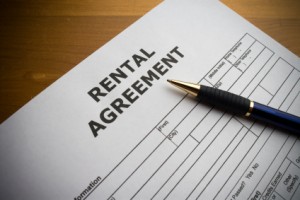Lease Basics for New Landlords
 If you’re a new investment property owner, starting out with all your paperwork in place is a must-do. That means compiling a lease agreement before you show your rental property to a prospective tenant—no matter how badly you want or need to rent it.
If you’re a new investment property owner, starting out with all your paperwork in place is a must-do. That means compiling a lease agreement before you show your rental property to a prospective tenant—no matter how badly you want or need to rent it.
Depending on where you live or where your rental property sits, you’ll have specific requirements unique to that state or locality. Be sure to familiarize yourself with the requirements of your state. But in general, the same provisions apply to most residential lease agreements no matter where the property is located. Most important: you need to be sure your lease agreement protects your property, your other tenants, and your business and personal resources.
Here’s a handy list of important provisions to include in a lease agreement:
- Legal Description of the leased premises: Be thorough. Include address, apartment number, city, state and zip code
- Term of Lease, including starting and ending date, with a provision to terminate early in accordance to provisions of the lease;
- Use and Occupancy: Explain how the property may be used (i.e. “for residential purposes”) and a list of names of authorized occupants.
- Rent Payment: State the amount of the rent, how it is to be paid, and penalties for late payments and insufficient funds. Consider a statement that no partial rent payments will be accepted (to avoid any problems if eviction becomes necessary).
- Security Deposit: state the amount of the deposit due upon signing the lease, as well as conditions for return of the security deposit.
- Default: Explain events of default and remedies.
- Utilities: State who pays for which utilities, including gas, telephone, cable, internet, electricity, water, sewer and trash pickup.
- Covenant of Quiet Enjoyment: This explains that the tenant, upon fulfilling his or her obligations under the lease, may peaceably and quietly enjoy the premises without interference by the landlord or a representative thereof.
- Assignment or Subletting: State whether or not the tenant is allowed to assign the lease or sublet the property, and if so, set the conditions under which they may.
- Pets: State whether or not pets are allowed and any restrictions related to type, size, breed, number, etc. Also include the amount of any required pet deposit or fee and conditions for return at the end of the lease.
- Maintenance, Damage and Alterations: States what maintenance the property owner is responsible for, what the tenant is required to do to maintain heating and plumbing systems, when routine maintenance inspections will be conducted, conditions under which the property owner may enter the unit for emergency repairs, and what alterations (paint, for example) are allowed.
- Insurance: Explain what type and level of renter’s insurance is required, if any.
- Abandonment: Defines what may be considered abandonment of the property by the tenant, and the landlord’s rights when it occurs.
- Right to Enter Premises: States when and under what circumstances the property owner or representative will be allowed to enter the rental unit, i.e., number of hours or days of notice.
Other notices, indemnities and covenants are likely to be required in a particular state or by your attorney. It’s always best to have legal counsel review your residential lease prior to using it.
Any forms or information provided by E-Renter USA is not intended to replace legal advice. You are advised to consult an attorney in your area, and to check all local and state regulations.

Add A Comment
You must be logged in to post a comment.